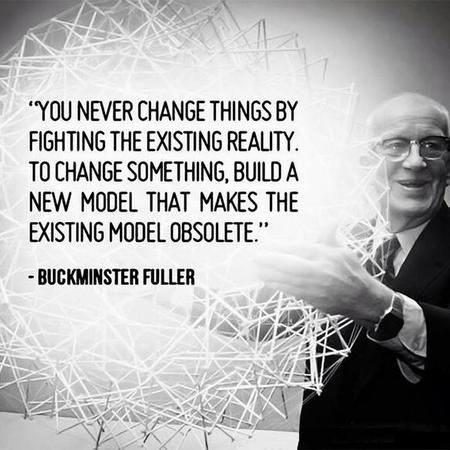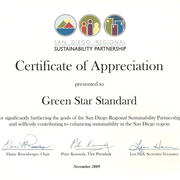Life Cycle Assessment is becoming a more popular tool as increasingly more companies are investigating ways to minimize their effects on the environment. In many situations the benefits to be gained from LCA outweigh the challenges.
by Aysu Katun, Green Economy Post
As environmental awareness increases, industries and businesses are assessing how their activities affect the environment. The environmental performance of products and processes has become a key issue, which is why some companies are investigating ways to minimize their effects on the environment. One such tool is Life-Cycle Assessment (LCA).
LCA can be thought of as a scientific way to measure the overall environmental impact of a material or product over its entire life cycle. It involves making detailed measurements during the manufacture of the product, from the mining of the raw materials used in its production and distribution, through to its use, possible re-use or recycling, and its eventual disposal.
Scientific Applications International Corporation (SAIC) states that the ability to track and document shifts in environmental impacts can help decision makers and managers fully characterize the environmental trade-offs associated with product or process alternatives. By performing an LCA, analysts can:
- Develop a systematic evaluation of the environmental consequences associated with a given product.
- Analyze the environmental trade-offs associated with one or more specific products/processes to help gain stakeholder acceptance for a planned action.
- Quantify environmental releases to air, water, and land in relation to each life cycle stage and/or major contributing process.
- Assist in identifying significant shifts in environmental impacts between life cycle stages and environmental media.
- Assess the human and ecological effects of material consumption and environmental releases to the local community, region, and world.
- Compare the health and ecological impacts between two or more rival products/processes or identify the impacts of a specific product or process.
As an approach, LCA supports and improves decision-making.
APPLICATIONS
Lifecycle assessments can have numerous applications. Deloitte Development’s paper “Lifecycle Assessment: Where is it on Your Sustainability Agenda?” states that LCAs can be used to support initiatives such as targeting supply chain improvements that drive the greatest environmental impact. According to the paper, by undertaking an LCA study, Tropicana discovered that its carbon footprint was not driven by the transportation of heavy juice containers but by the agricultural inputs needed to grow oranges. This knowledge helped Tropicana focus on sustainable agriculture practices like reduced fertilizer use to achieve substantial reductions in the company’s carbon footprint.
Product & packaging development is another application area that the paper defines in which LCA can be used to model the relative environmental profiles of a range of material choices or packaging options. LCA enables companies to reduce environmental impact at its source in the design phase. For example, Nike has redesigned certain shoes with mechanically locking soles to reduce use of glue or solvents.
LCA can also serve as a communication tool between companies and consumers. Patagonia, for example, launched its “footprint chronicles” in 2008 to trace the journey of some of its products as they make their way from raw materials like cotton to the consumer and then to the landfill or back to Patagonia to be recycled into new products. This provided a channel for the company to openly communicate its successes, challenges and ongoing efforts.
In the late 1990’s, P. Frankl and F. Rubik sent out 1600 questionnaires about the use of LCA in business to selected companies in four European countries. Their paper “Life-Cycle Assessment in Business: An Overview on Drivers, Applications, Issues and Future Perspectives” that reported the results of the survey, identified additional LCA application areas such as:
- Bottleneck identification
- Information and education to consumers and stakeholders
- Compare existing products with planned alternatives
- Compare existing company products with products of competitors
- Procurement specifications, supplier screening, product co-makership
- Internal information and training
- Anticipate and negotiate legislation
- Marketing, advertising policies & joining eco-labelling criteria
- Environmental cost allocation
- Assess the gap from eco-label criteria
- Radical changes in product life cycle
CHALLENGES
LCA is subject to numerous challenges that can hinder its adoption. Many LCAs have reached different and sometimes contradictory conclusions about similar products. Comparisons are rarely easy because of the different assumptions that are used, for example in the case of food packaging, about the size and form of container, the production and distribution system used, and the forms and type of energy assumed. To compare two items, which are identically sized, identically distributed, and recycled at the same rate is relatively simple, but even that requires assumptions to be made. Comparisons of products, which are dissimilar in most respects can only be made by making even more judgments and assumptions.
The validity of data is also a concern with LCAs. Since we are living in a global world and economy, new processes, manufacturing methods, and materials are introduced to various processes and products. Therefore, it is important to have current data when performing a LCA. If data from ten years in the past is used, the LCA will not be accurate, because the quantitative analysis will not reflect the current methods utilized in the process or product. Therefore, drawing conclusions from a report using such data will be ineffective, since the data is unavailable.
Performing an LCA can also be resource and time intensive and many companies lack the in-house expertise required for data measurement, modeling and interpretation of results. Depending upon how thorough an LCA the user wishes to conduct, gathering the data can be problematic, and the availability of data can greatly impact the accuracy of the final results. Furthermore, there is still no standard methodology for LCA that is widely accepted. Small differences in assumptions related to valuation techniques can lead to radically disparate results. Therefore, it is important to weigh the availability of data, the time necessary to conduct the study, and the financial resources required against the projected benefits of the LCA.
BENEFITS
Companies that utilize LCA can achieve a variety of benefits many of which have already been mentioned in this post. Deloitte’s paper outlines several others:
Innovation: By pointing to areas ripe for improvement and modeling the outcomes of competing new ideas, product level LCA data can inform the innovation agenda.
Cost savings: Reducing the negative environmental impact of a product or a process means being more efficient with materials and the energy required during the manufacturing process. Increased efficiency leads to cost savings by reducing the quantities of materials and energy bought in as well as by savings on rejected materials and disposal costs, which again means minimizing the negative environmental impact. By discovering what is driving environmental impacts and their corresponding monetary costs, companies can hone sustainability investments on the areas of highest potential impact. Furthermore, certain investments in R&D and projects related to renewable energy may be eligible for tax credits.
Internal alignment: LCA can provide a common ground for internal goal-setting and communication. People who work at different departments within an organization can rally around the relative objectivity provided by LCA results to achieve consensus on enterprise-wide priorities.
Regulatory preparedness: LCA can help quantify the projected product cost implications of future carbon legislation and flag those areas that warrant immediate action. LCA can also enhance general transparency to deflect scrutiny from regulators and other stakeholders.
Corporate reputation: LCA can demonstrate a company’s deeper commitment to improved environmental impact. Improved sustainability claims can strengthen customer loyalty.
In many situations the benefits to be gained from LCA outweigh the challenges. What companies do with the results of an LCA will ultimately determine whether the effort is worth it. Companies who succeed in integrating LCA with existing decision-making frameworks can achieve smarter sustainability.
There are numerous LCA tools and software currently available for use. EPA’s website outlines some of these resources.
© 2010, Aysu Katun. All rights reserved.






